Audio History Refurbished & Revisited: The Spendor BC1 Loudspeakers
‘In the House’ by David Neice
The Setting
I bought a brand new pair of Spendor BC1s in and around 1975 – voila, the original sales slip. This makes my pair 46 years old, but thanks to a refurbishing I did two years ago they are still going strong.
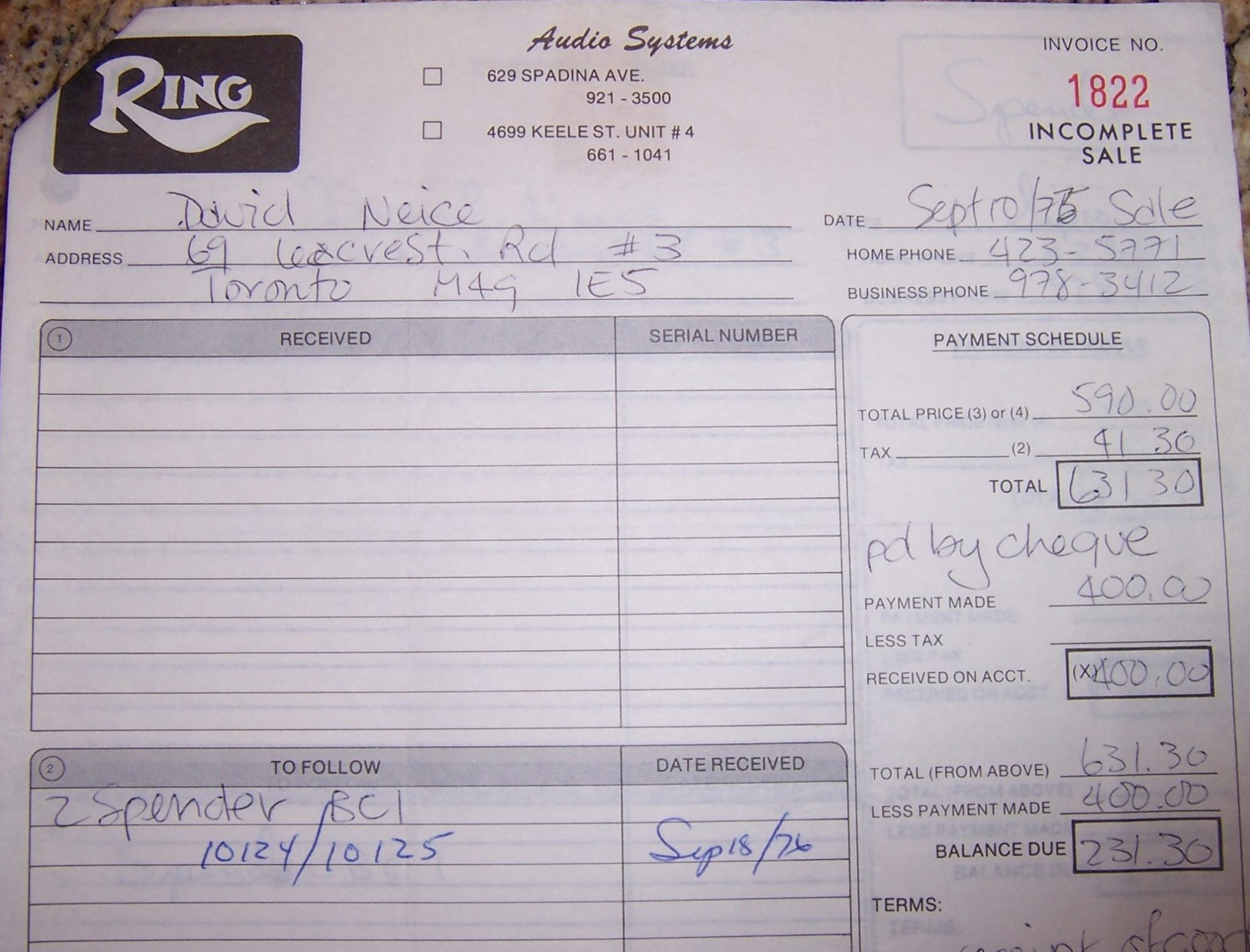 Over the decades many, many components, including speakers, have come and gone from my system, but I can never muster the courage to sell the BC1s. They are like old slippers that you just cannot bear to part with even when the dog has chewed them to a frazzle.
Over the decades many, many components, including speakers, have come and gone from my system, but I can never muster the courage to sell the BC1s. They are like old slippers that you just cannot bear to part with even when the dog has chewed them to a frazzle.
Spendor was at that time strictly a niche product hardly known outside the broadcast industry, and very few shops had even heard of them let alone had them for sale. I lived in mid-town Toronto at the time, and there was a high end shop located right downtown called Ring Audio. A few of the U of T graduate students (and I was one) used to hang out there to feast our eyes and ears on the latest British gear.
The word on the street was that the British hi-fi press was over the moon about the Spendor BC1 and that news had travelled out to the colonies, like Canada, where certain afficianados were buying in. Certainly this trend was accelerated by a unique Montreal shop and audio salon called ‘Audiorama’ that was owned by Yolande Roberge. She carefully cultivated the Montreal symphony crowd with her hi fi recommendations, and she was convinced that the Spendor BC1 and the larger BC3 were true marvels of audio engineering.
To be frank, when I first heard them at Ring Audio, and prior to purchasing them, I wasn’t really sure. They didn’t draw immediate attention – they just did their job. In that time period and with my youthful enthusiasm intact I thought hi-fi had to mean ‘wow’ and so I was a bit non-plussed when I first auditioned them.
My prior experience had been mostly with Dynaco A25s, a pleasant enough speaker, I suppose. What I didn’t know at the time was that the Dynacos and then subsequently the Spendor BC1s were acting as my quiet audio tutors. I just didn’t really know enough to appreciate it.
I listened and listened and finally I bought the Spendors. There was a ‘rightness’ about them that kept me coming back. Only later did I realize I had made a magical choice.
Some Brief History
Spencer Hughes and his wife Dorothy (thus SPEN-DOR) established Spendor after Spencer left the research and development laboratory at the BBC. He had worked on speaker driver design under his friend Dudley Harwood, later of HAR-BETH fame.
The BBC was obsessed with the quality of its studio and on-air sound and had embarked on an ambitious project to create several speaker designs that would tell them exactly what they were broadcasting. One of the components of these projects involved materials technology for woofers, and Spencer was tasked with working with Bextrene as a potential woofer material.
These were heady days, and the idea was to faciltate the appearance of several speaker designs for use in broadcast studios. Not much thought was given to the home hi-fi market. It turned out though that the BBC laboratory acted as a kind of incubator for essentially the entire UK audio industry which was later to flourish.
After Spencer Hughes left the BBC, he was faced with the formidable task of producing speakers from essentially a cottage industry, in a quonset hut in the south of England (Hailsham). Many stories have already been written about his work to create Bextrene woofer cones. The upshot of it all was the appearance of the first BC1, which was initially a two way speaker design.
Further design work enhanced it to become a three way design which included a Celestion tweeter and a Coles supertweeter, as requested by the BBC to check the on-air quality of their FM broadcasts. Thus the standard production BC1 was born as a three way studio broadcast monitor, a shiny new progenator for the BBC LS3/6 design brief (more on this below).
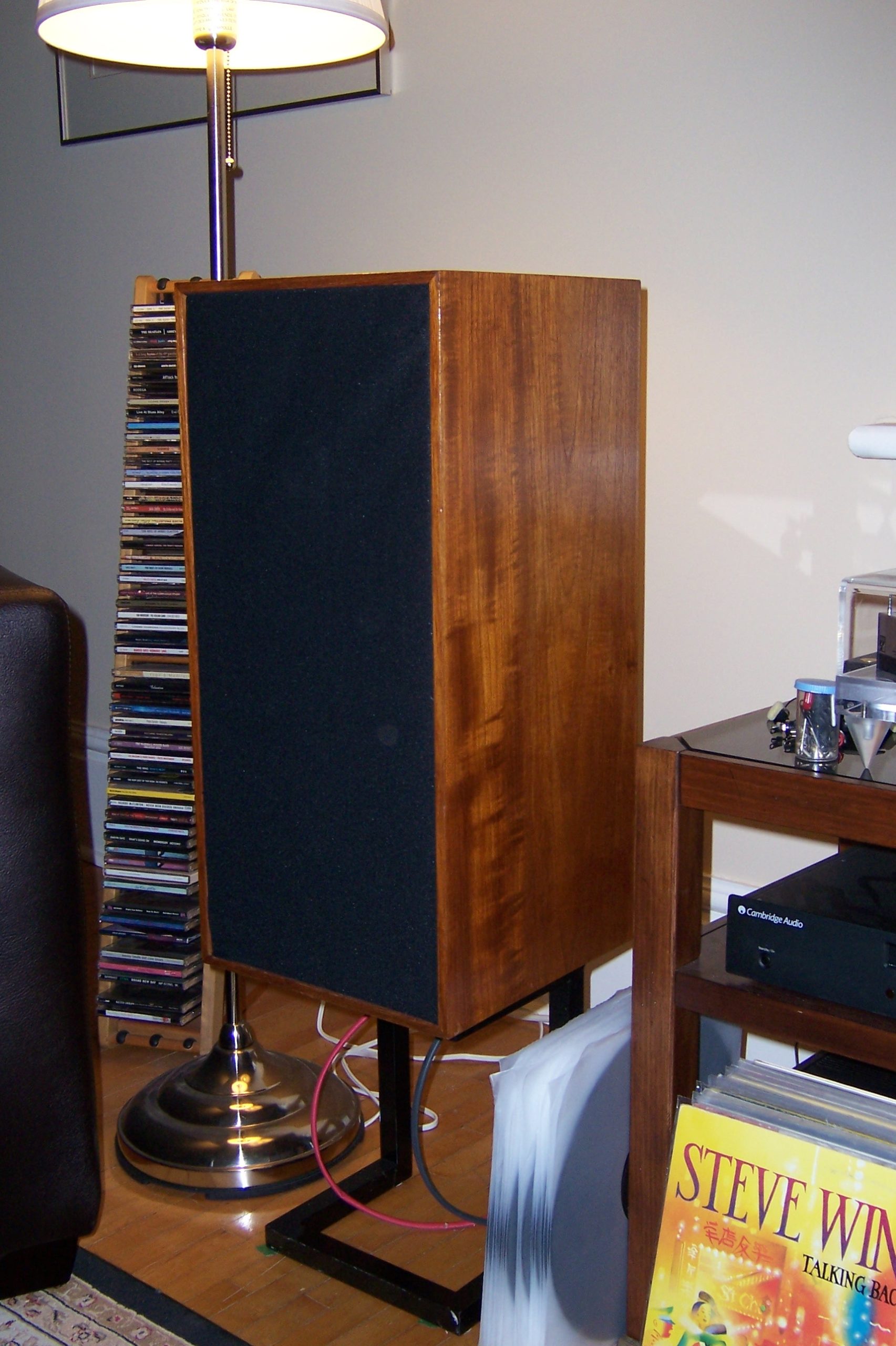 Power handling was always a problem. Over the functional life of the BC1 design, the tweeters never changed but there were at least four sets of Bextrene woofer designs. The first (mine) were the Alnico Blues and were only rated at about 25 or 30 watts. The second were the Alnico Reds, and the idea was to allow them to have a higher wattage rating as well as higher potential output. Finally the last of the production runs switched to Ferrites.
Power handling was always a problem. Over the functional life of the BC1 design, the tweeters never changed but there were at least four sets of Bextrene woofer designs. The first (mine) were the Alnico Blues and were only rated at about 25 or 30 watts. The second were the Alnico Reds, and the idea was to allow them to have a higher wattage rating as well as higher potential output. Finally the last of the production runs switched to Ferrites.
I think Hughes was pretty much aware that the BC1s were designed to be low volume studio speakers, destined for reproducing classical music – but the larger domestic market out there was for ‘rock’, and this required higher amplifier capacity and more durable drivers.
Polypropylene cones and Kevlar cones eventually triumphed over Bextrene, because they are simply stiffer materials and can take a heavier pounding at higher dB levels. Certainly, problems with the BC1 mid-woofer units as well as scratchy voice coils are the #1 reason that these speakers get replaced by other models by their owners. You are always aware they are very fragile.
To say there is a cult that surrounds them is a bit of an understatement. Of the speaker designs of that era, only the Quad ESL57s and various iterations of the LS3/5a have equivalent followings. The BC1s have their own website which is a members only deal. There is a whole user group out there that bemoans the gradual demise of the existing BC1 mid-woofers. It reminds me of the tears shed over the dwindling existing supply of 7199 tubes for the Dyna Stereo 70. For those curious, a web link to the user group is found here. https://groups.io/g/spendor
Derek Hughes, Spencer’s son, also apprenticed at the BBC, and then worked in the family business but eventually sold Spendor to Phillip Swift, who had previously founded Audiolab. Derek Hughes consults on speaker design for various manufacturers, but still comments and patiently answers questions about the vintage BC series Spendors for the above noted online community.
Classical BC1 Reviews
The BC1s made quite a splash amongst reviewers after it’s release. Probably the most famous review was by Ralph West in Hi-Fi News and Record Review (1972).
Not to be outdone by the British, word about the Spendors drifted over to the US, and the fabled J. Gordon Holt, the founder of Stereophile, weighed in with his take on the BC1s. Here is a direct link to that review.
https://www.stereophile.com/content/spendor-bc-1-loudspeaker
But They Are Not Perfect
No speaker is perfect, and least of all the BC1. It comes with some inherent warts that it’s lovers generally work around. For instance, the main problem with Bextrene is that when it is driven too hard it ‘quacks’.
I listen at low levels and it is the fine resolution of details that I am always seeking, along with mid-tone accuracy and instrumental clarity. But if you dial the BC1s up there is some ‘nasality’ that begins just about where I would normally ‘back off’ the gain a hair. If you further push them upwards they will start to quack, and they really don’t like rock concert levels of play.
In addition the bass is somewhat weak and floppy, and this was a major criticism of the whole design. Also, from a domestic standpoint rather than when used as studio monitors, they just will not play very loud and any attempts to push them in that direction usually results in damage to the irreplacable woofer drivers.
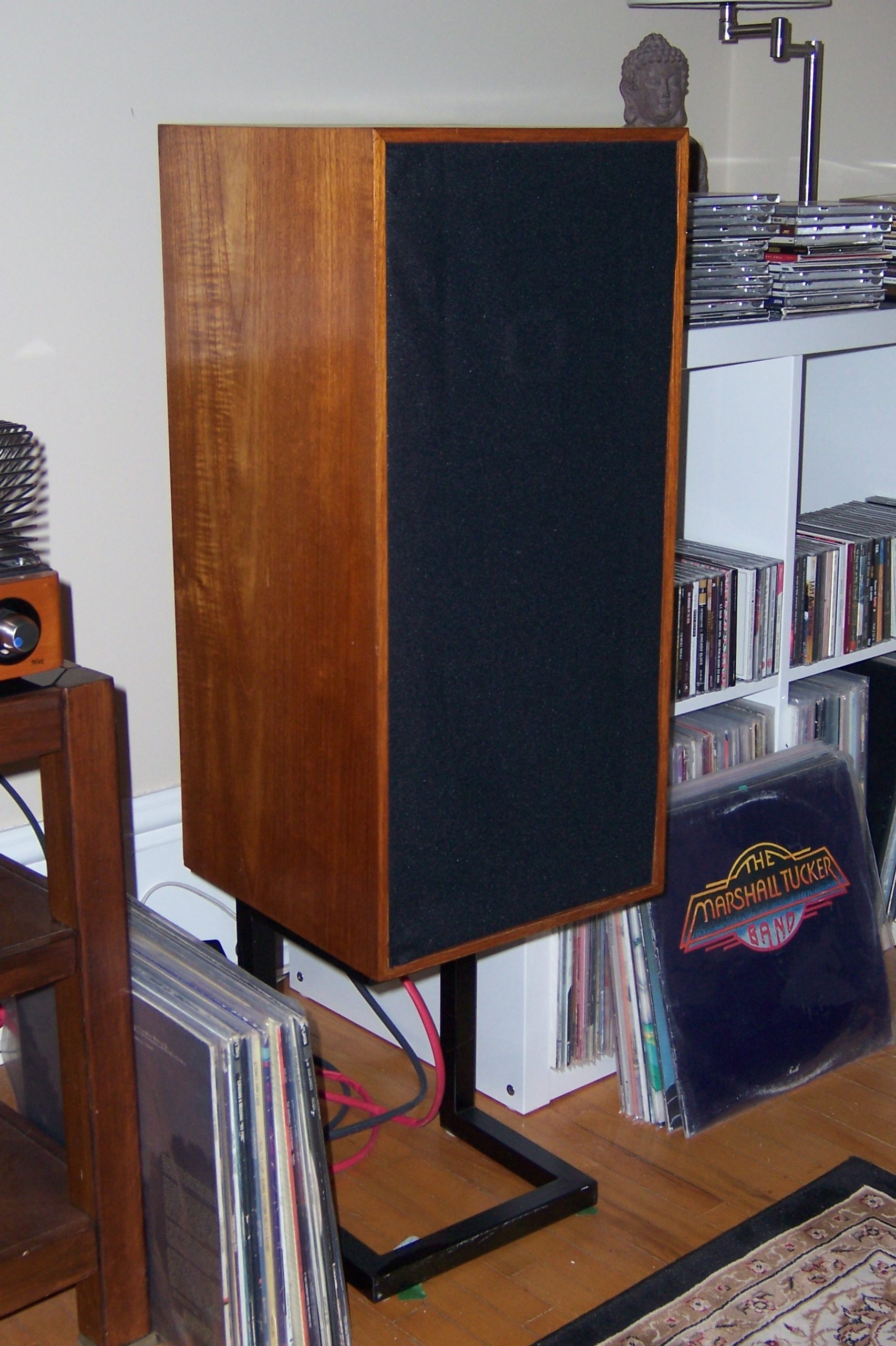 Anyway, these faults notwithstanding, through judicious use of the volume control you can stay away from Bextrene quackery and still experience a certain nirvana. The same sorts of limitations apply to the Quad ESL57. But in their day Peter Walker’s ESL57 was every audio engineers sonic benchmark, and the game was to see if anybody could design a dynamic box system that got anywhere close. Those were exciting times and the BBC research group was right in the thick of it. British audio really set sail from that point.
Anyway, these faults notwithstanding, through judicious use of the volume control you can stay away from Bextrene quackery and still experience a certain nirvana. The same sorts of limitations apply to the Quad ESL57. But in their day Peter Walker’s ESL57 was every audio engineers sonic benchmark, and the game was to see if anybody could design a dynamic box system that got anywhere close. Those were exciting times and the BBC research group was right in the thick of it. British audio really set sail from that point.
Refurbishing My Speakers
My spouse and I moved a lot during some four decades of our dual careers. We always lived in Ontario but we dragged these speakers around behind us for all 40+ years. During many of those years I ran them mostly with tube amps; Leak, Dynaco, Conrad-Johnson, Quicksilver Monoblocks, and an Audio Note OTO.
Eventually they were replaced by a pair of J.M. Reynaud Twins, and then they went into a store room. By this point they had started to look pretty tacky and for several years they just sat in heated storage.
About two years ago I hauled them out and decided they warranted a buffing. I took the front baffles out as the three drivers and the crossover network are all attached to the front baffle, and I had my tech test and then replace all the capacitors on the crossovers. New mylar and polystyrene caps were used, as per the originals, but nothing very fancy was installed. Derek Hughes had suggested to just use standard over-the-counter capacitors, as opposed to some audipohile jewelry.
We also rotated the mid-bass drivers 180 degrees, to counteract any incipient speaker surround sag. I then took the empty cabinets to some woodworking guys I know, and we tint matched and then re-stained them in a light cherry finish with an alcohol based wood solution they use on fine dining chairs. Then I polished them with an oil based furniture polish. I put the baffles back in and then trimmed up some black fabric I bought for refurbishing the grills, and ‘voila’!
They now look terrific, and more recently I replaced the speaker posts with new five way binding posts and that was about it for the refurbishing effort.
Listening After Refinishing
Speakers are always the elephant in the room, and are arguably the single most important component in audio reproduction. After refinishing I first set them up grill-less and near field style, placed well out in the listening room and maybe 7-8 feet from the sweet listening spot.
I then sat transfixed as Sarah McLaughlin sang ‘Make Me a Witness’ and then ‘Angel’ from the album ‘Surfacing’. I had heard these cuts many many times before, but only just then had I really heard them. ‘My god’ was about all I could say. The midrange was to die for. I have heard rumours of marriages that dissolved because of that midrange purity. So I immediately chose to rotate them into the system for several delightful weeks.
Since it had been about a decade since I really listened to them, I had forgotten how resolving and ‘tonally right’ Bextrene is as a cone material. It was eclipsed in the market and I am not sure why, because for instance the KEF B110 driver had a Bextrene cone and it was the very heart and soul of the original LS3/5a. When Bextrene disappeared I gravitated to speakers with doped paper cones.
Listening Again Today
Now we can fast forward to today. Noam Bronstein, the editor and publisher of ‘Wall of Sound’ asked if I would write about my refurbishing experiment and have another listen to the BC1s and report in. So here goes.
Even though the BC1s have this winter been bumped out of rotation by a pair of DALI Oberon 5s, I set them up again in their preferred location about seven feet apart and approximately 20 inches out from the back wall with a slight toe-in and on 12 inch steel stands. This places the midpoint between the two tweeters at just about ear level in my room.
First up were a series of old chestnuts, by which I mean CDs and LPs that I have played dozens of times on different speakers and systems. These are always quite revealing.
For instance, I have a pretty complete collection of Eva Cassidy recordings and several by Patricia Barber. These were used to test the midrange tonal accuracy of the BC1s. Let’s start with Eva.
I ran Eva through the Spendors on several evenings, and exhausted my collection of her CDs. Never once did the BC1s let me down. The intimacy of the midrange is breathtaking and you feel at times as if she is a living presence and actually within the room and beside you. Of course it is an illusion, but a very pleasant one to have and a major benefit to our hobby as audiophiles.
Similarly, the magic of Patricia Barber’s voice is conveyed by the Spendors with remarkable alacrity. In Barber’s case I have a live reference memory because a few years ago, when I was in Chicago I caught several of her sets one evening at the Green Mill. She is a wonder on both piano and voice. Her classic audiophile CD, ‘Blue Cafe’, deserves all the kudos it has received.
Moving away from the reproduction of solo voices I began to play some old chestnuts from the rhythm and blues genre, and settled on Sam Cook and Anita Baker. This was done to check the PRaT of the Spendors.
There are few live R & B albums that can match Sam Cook’s ‘One NIght Stand – Sam Cook Live at the Harlem Square Club, 1963’. The sweat literally drips off the vinyl. The audience is lathered up and Sam is in fine form and playing to a largely black crowd, the home team so to speak.
This album will rip your face off, and tests the mettle of any speaker’s ability to ‘get down’. On the Spendors, all the greasy glory of Sam’s voice cuts through the inevitable audience din. I first heard this album while browsing records in Toronto, and immediately had to own it via special order in vinyl.
Similarly, Anita Baker’s brilliant album ‘Rapture’ has an R & B ferocity that is a wonder to listen to, The final two tracks are amongst my all time favourites for revealing the rhythmic drive that a good speaker can convey. Through the BC1s the beauty of her gospel tinged voice emanates to all the corners of the room. The PRaT is spectacular and the closing saxophone sections on several tracks are stunning. It is one of the finest albums in the catalogue of modern R & B, and if you’ve never heard it or missed it when it was released, I urge you to find a copy.
Further Considerations
We are now close to 50 years since the BBC research department worked out the basic parameters for the LS3/6 design brief that was (mostly) carried into production by Rogers, Spendor and Harbeth. The BC1, like the original Harbeth HL Monitor were both tweaks on the LS3/6 design (see footnote 1).
The complex devil of the LS3/6 design brief is found in all the fine details. They require heavily damped but thin walled baltic birch cabinets, a complex three way crossover network, a high crossover point (3.5KHz) from the mid-bass to the tweeter, and then a smooth handoff to a supertweeter. The internal cabinet dimensions must not vary, they need carefully tested and matched drivers, and during final construction they require a matched frequency response between speaker pairs of +/- 0.5dB. The list goes on and on.
However, the sonic result from paying close attention to all those little details is definitely worth it, and I am still staggered by this technical achievement. The level of midrange tonal accuracy remains, IMHO, the best I have ever heard from a dynamic speaker.
Some Options If You Want New BC1 Descendants
Stirling Broadcast made a licensed version of the LS3/6 which they believe was as close as possible to the original design brief as current materials technology will allow. The Stirling version was also voiced and tuned by Derek Hughes, acting as a consultant to Stirling. You will search long and hard to find any negative comments about the Stirling version of this classic design. The late Art Dudley’s review of these speakers is found here.
https://www.stereophile.com/content/stirling-broadcast-bbc-ls36-loudspeaker
Howard Milstein has a more recent review, with some comparisons to the BC1, which can be found here.
https://www.thesoundadvocate.com/2021/04/stirling-broadcast-bbc-ls3-6-loudspeakers-extensive-review/
Spendor also still makes an ‘updated’ version of the BC1, the S1/2 R2 in their Classic range, which they argue is a direct descendant. I priced a new pair of S1/2s a year ago at Audio Eden – $10K plus HST – certainly not chump change. Harbeth’s Super HL5 Plus is another direct descendant, derived from the Harbeth HL Monitor Mk1, which was Dudley Harwood’s first production tweak on the LS3/6 design when he set up Harbeth. It seems that these companies, which have changed ownership hands now, still appreciate a good thing when they hear it.
Comparing the BC1s to Other Speakers
The most startlingly realistic speakers I have ever heard are the original Quad ESL57 and ESL63 models. Using human voice as a reference, I believe they are without peer in the uncanny way that they can ‘unbox’ the human voice so that you imagine that the actual person speaking is standing in front of you. The Spendor BC1s have a mid range that is exceptional but it is still subject to box colourations. Unlike the Quads though, the BC1s and BC3s have, with careful use, been in service for decades without the need for massive overhauls, which has been the usual fate of the Quad electrostatics.
When actually playing music, the Quads and the Spendors each have their own respective fan base. They both very much appeal to a pipe and slippers set of listeners; i.e. to those who are wedded to a particular sonic presentation (and with some definite prejudices) that they cannot overcome.
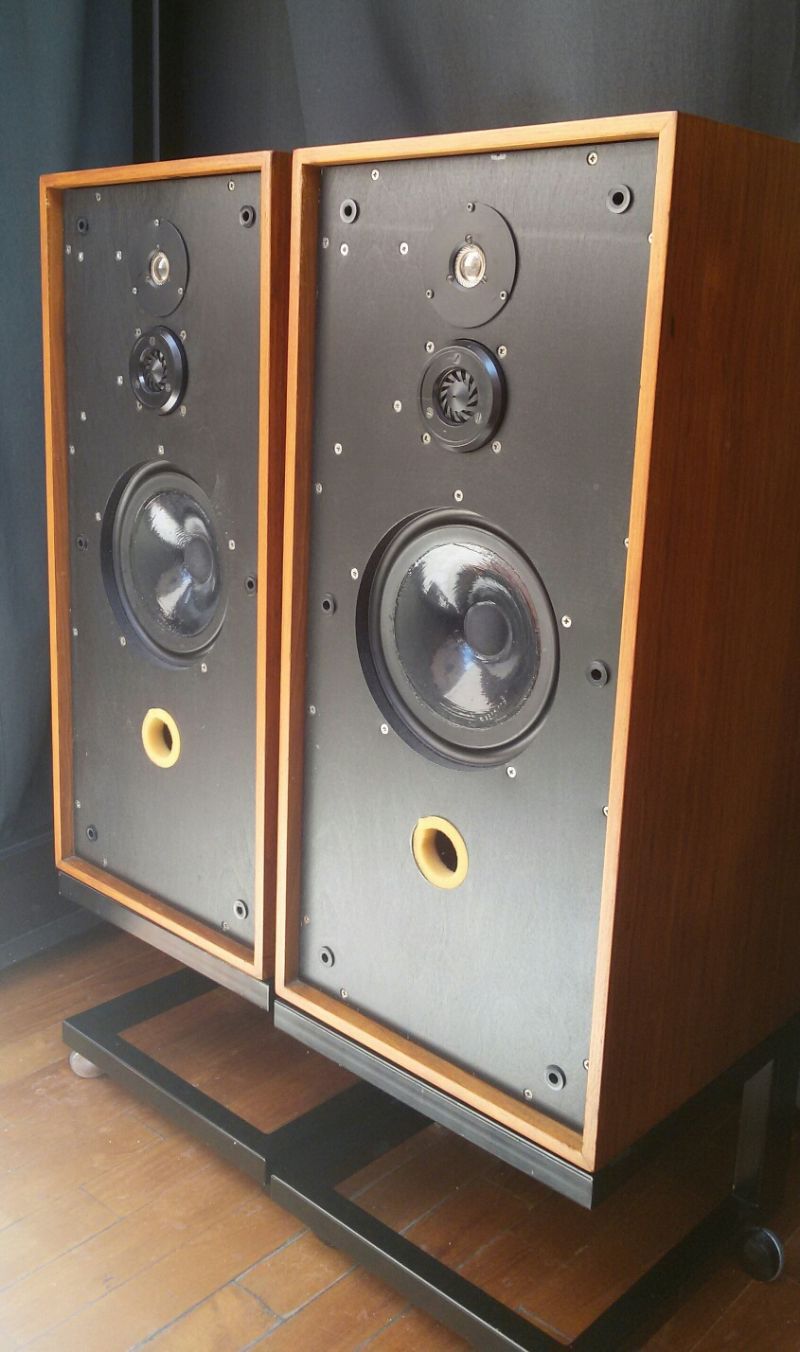 Over the years I have auditioned the Harbeths Super HL5s, and true to their BBC origins they do a fairly good job of emulating the Bextrene midrange, even though the Harbeths long ago abandoned that cone material for their modern radial composite. I have either owned or listened to some newer models of Spendors, including the little S3/5R2, the S2/3R2 and the newer A line A5. None of these use Bextrene drivers, but all of them have ‘house characteristics’ that reflect the Spendor legacy.
Over the years I have auditioned the Harbeths Super HL5s, and true to their BBC origins they do a fairly good job of emulating the Bextrene midrange, even though the Harbeths long ago abandoned that cone material for their modern radial composite. I have either owned or listened to some newer models of Spendors, including the little S3/5R2, the S2/3R2 and the newer A line A5. None of these use Bextrene drivers, but all of them have ‘house characteristics’ that reflect the Spendor legacy.
Finally we come to J.M. Reynaud speakers. Around 2005, and after thirty years of living with the BC1s, I decided it was time for a change. I was guided by the views of Bob Neill, the owner of Amherst Audio in Amherst, Massachussetts. In Bob’s eyes the J.M. Reynaud Twins were the natural heirs to the legacy of the BC1s. This opinion brighened my day and I set out to find a pair.
Fortunately a shop in Windsor (Audio Two) had imported a pair because the owner ‘just wanted to hear them’. I visited the shop and bought them immediately. My wife followed up by purchasing the accompanying Reynaud Magic Stands, and I was set. For about a dozen years they held their ground, while other speakers and components came and went.
More recently I upgraded my pair of Twins to the J.M. Reynaud Bliss Jublees, a speaker that is the result of a complex evolution of the Twins over a twenty year period. So how do the Spendors stack up against this modern competition?
I have said it before and I will say it again – the Bliss Jubilees are intimacy-seeking speakers, and are the natural heir to the BC1s as midrange champions. But they also correct several faults that make the BC1s seem a dated design.
First of all, they correct the floppy bass of the BC1s. The Reynauds use a small but sophisticated transmission line design for the bass reproduction that is quick and tuneful even if not plumbing particularly deeply.
Second, the Bliss Jubilees have a superior tweeter system that resolves fine detail at the upper end with great clarity. But most of all, the Bliss Jubilees are able to convey the emotional depth of a piece of music in a way that I simply cannot find in other speakers. They are, in the words of their Canadian importer, ‘something special’.
Of course, the BC1s in their day were something special too, but times and materials technology change and so after 50 years it is not too surprising that the BC1s would be (partially) eclipsed by newer and more advanced designs. Curious readers may want to also look at my longer review of the Reynaud Bliss Jubilees in ‘Wall of Sound’ which is found here.
Summing Up
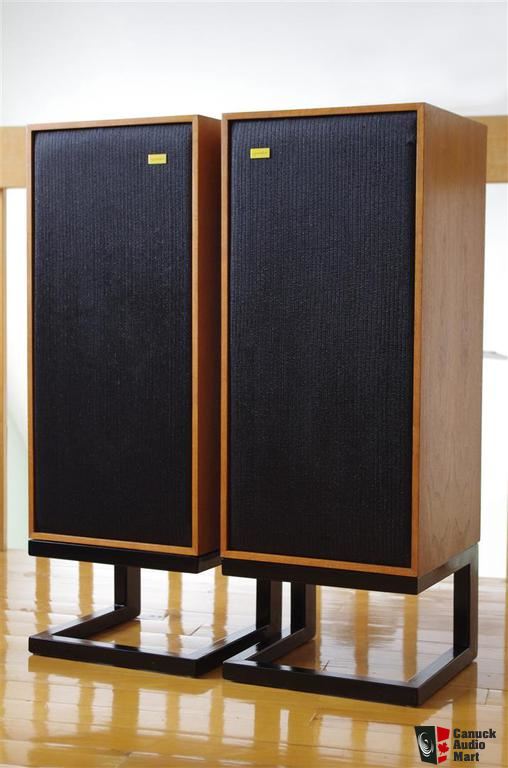 Someday I may try to find a pair of LS3/6 speakers from Stirling Broadcast or maybe even the Super HL5 Plus from Harbeth, but I will never sell my BC1s. It seems that after nearly 50 years of audio component changes, I have only managed to come full circle and that I just keep backing into my old corner again and again.
Someday I may try to find a pair of LS3/6 speakers from Stirling Broadcast or maybe even the Super HL5 Plus from Harbeth, but I will never sell my BC1s. It seems that after nearly 50 years of audio component changes, I have only managed to come full circle and that I just keep backing into my old corner again and again.
Ralph West reviewed the BC1s in Hi-Fi News in 1972 and closed his review with typical British understatement and with his tongue firmly in cheek. He wrote ‘(Their performance) is no new effect, and it has been experienced once or twice before when some large step forward has been made in equipment and is not limited to loudspeakers of course.’
That statement pretty much still captures it all.
Footnote 1: It is not very clear which preceded which; the appearance of the BC1 or the BBC’s LS3/6 design brief. There was, I believe, quite a bit of mingling going on. Others claim the BC1 was a result of the LS5/5 design brief and it is hard to fathom the real truth here.

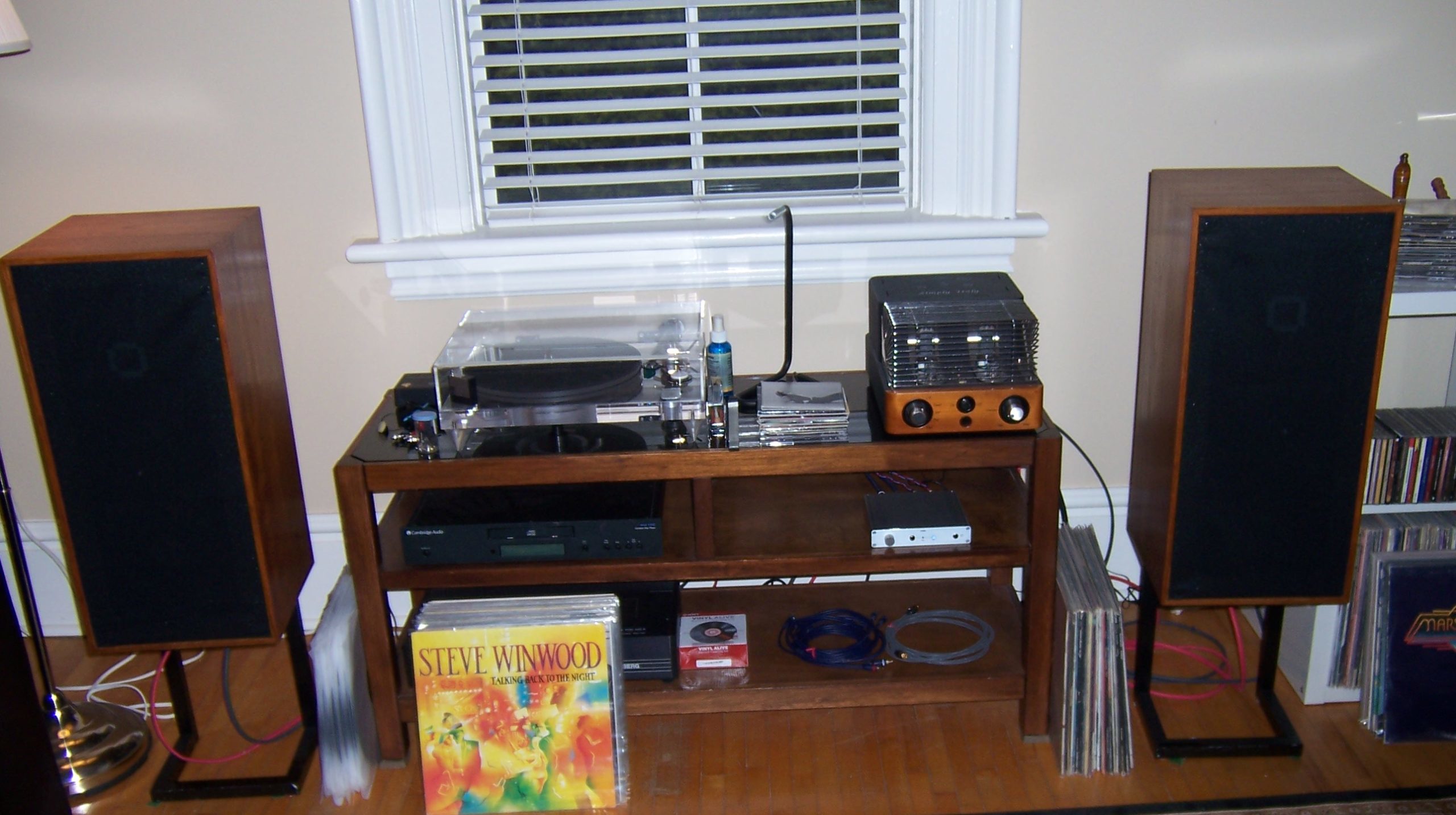
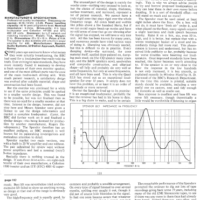

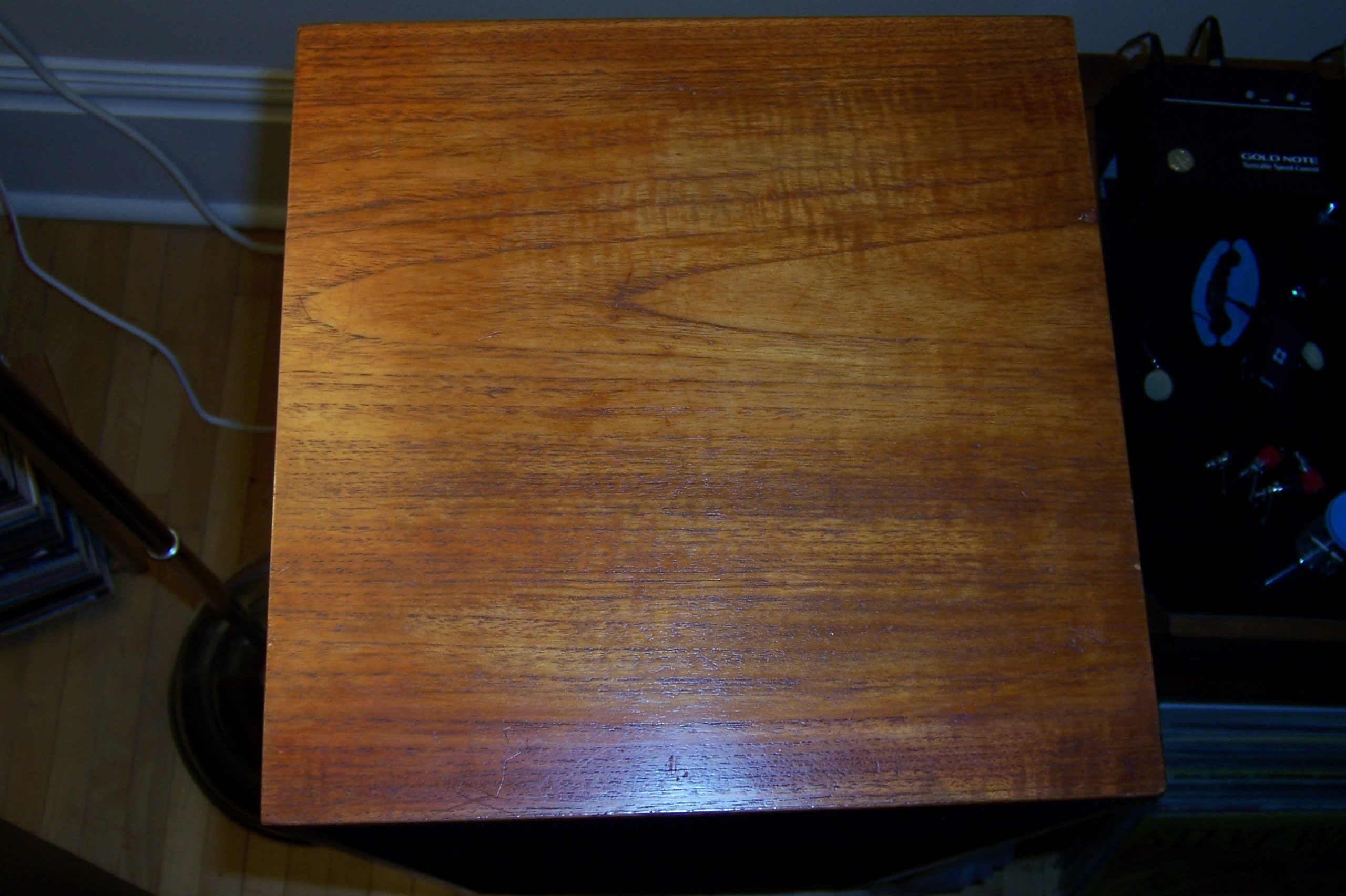
Hello David. Great article on a classic speaker! I have a pair of BC1 speakers, serial numbers 650/651. My system is all analogue. (Clearaudio Concept, Benz Micro SL, Lukaschek phono, SpaceTech Labs preamp, AES Six-Pac mono blocks). It’s fabulous in my humble view.
I have a few questions regarding the BC1. With speaker height you mention yours are on 12″ stands. Spendor recommends the HF1300, (6″ from the top) is at ear level. For me that means 18″ stands. Mine are Skylan. Do you see an issue with an 18″ stand? I find there are subtle but amazing differences when going a few inches lower, or higher. Also, I have them toed in so that I can JUST see the inside edge. Make sense? I am considering trying IsoAcoustics Orea’s under the speakers. Any thoughts? Lastly, I have never tried foam in the port. Should I?
Sorry for so many questions. lol Trying to make these beauties sound as great as they possibly can.
If you are ever in the Vancouver area, please pop by! Would be great to meet a legend in Canadian music! David
We have a pair of bc1 spendor speakers (serial 5340/5341) in original boxes and packings as well as their black stands on wheels…..any idea of value and how to advertise?
Hello J&R Wilson, where are you located? Would love to see them. Thanks
David, as an original owner (purchased new in February 1979) of a beloved pair of BC1s (serial# 18448/18449), I thoroughly enjoyed your article.
Late last year (2023) I disassembled the speakers to have the cabinets refinished. 5 moves around the US didn’t do the cabinets any favors.
I made the horrifying discovery that the bextrene laminate had begun to pucker on the edge and formed a goiter on one of the bass units. After much hunting, I found a shop in England, Five Ways Hi-Fidelity in Harborne, Birmingham that was able to repair the Spendor bass unit. At the same time I decided to check the Plessey film capacitors in the crossover. I discovered 3 of the 6 capacitors had drifted significantly in value. I replaced the all the Plessey’s with Wima MKP series film capacitors.
While the BC1s were out of service, I decided to audition a pair of Graham LS8/1s. Truly amazing speakers sharing many attributes with BC1s except using contemporary materials yielding incremental improvements. I ended up buying the Grahams and rotate them with the Spendors.
I paid £270 for my BC1’s in 1980. First driven by Armstrong 626 then Sansui R50 and now Yamaha rs202d.
I looked after a pair of Stirling LS3/6 LTD Edition BBC Reference’s for a friend who got them in a House Sale. I had the option to buy them for a relatively low price. They were in top class condition. Unfortunately, after perhaps 3 months of using them I decided I would not buy them. I love Jazz, especially experimental and free but also more traditional and modern and they (Stirling’s) did ok on the slower stuff but somehow did not on faster material. Where they really failed was in transient speed and attack. We are ‘only’ talking jazz for the moment. The problem is, I also like hard rock and death metal. It was here they really did not measure up. The Stirling LS3/6 is just too laid back and slow. Bass is fine but they do not go particularly low nor is it the tightest. That is not their forte. They are good for classical though and I have never heard my Bournemouth Symphony Orchestra coverage of Sibelius LP better on any of my many systems in the past. Still, it was with a somewhat heavy heart that I decided not to buy them and sold them for my friend for the princely sum of £1300 (UK) in 2022. Someone will love them now no doubt and they had a good deal as they sell for approximately £4500 new here. I meanwhile settled on another set of relatively vintage speakers, a pair of which I picked up from London in mint condition, the Mission 752 Freedom’s in Rosewood veneer. I have not changed them since and am happy. If I had to sum the Stirling LS3/6’s up I’d say it is a fine speaker for acoustic, classical and some jazz but it is certainly not an allrounder, it was never meant to be that. They do however take a fair amount of power and can go ‘loud’. Still, it’s not a party speaker. More like a fine wine to relax with.
Sorry guys – I got caught up in some things and didn’t check to see if there were comments – so now I am amending the review.
Note to David K (above)
You asked about the height of the stands. I actually think that 18″ is ideal. My stands are a bit shorter.
Note to J&R Wilson
A good pair of BC1s seems to be going for about $1000 Canadian these days. An exceptional pair of early models with stands may fetch a bit more.
Note to Daniel VanBeers
The Graham Audio LS 8/1 is my favourite speaker in the descent line from the BC1. Congratulations to you for buying a pair. I have been offered a pair but the price is a barrier for me right now. Exceptional speakers.
Note to Roman,
I have not heard the Stirling LS3/6 although it was highly regarded by the late Art Dudley. As noted above my favourite BC1 type speaker is the currently available Graham Audio LS 8/1. I did review them and the result is available here.
https://wallofsound.ca/audioreviews/speakers/graham-audio-ls8-1-speakers-a-first-look-audition/
Cheers to all,
David Neice